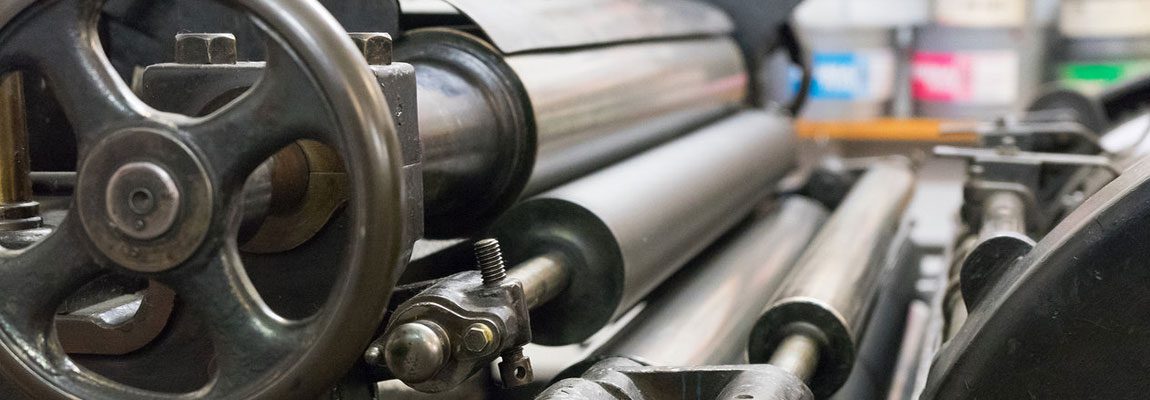According to the latest research from Dr. Joe Webb on the WhatTheyThink site (March 9, 2018), capital expenditures for printing companies fell in 2016 and Webb believes that the decline was due to used equipment. We agree. Mergers and consolidation within the industry has created a much larger cache of used equipment. Not everyone is a fan of used printing equipment, but we have seen many companies get great deals on used equipment which helps them reduce their costs and prices.
When talking about used printing equipment, it is important to recognize the risks and create strategies to reduce the risks. Benchmarks can help reduce some risks by comparing how often and how much other companies are investing. One of these benchmarks is capital expenditures as a percentage of billing. Like other benchmarks, significant differences occur in different size companies. For example, smaller printers spend about 4% and larger printers spend about 5% (Capital Expenditures as a Percentage of Shipments by Printing Industry Segment, Dr. Joe Webb, WhatTheyThink.com August 31, 2009).
Menn over 70 har en større risiko av kardiovaskulære bivirkninger eller denne lenken hormonelle problemer eller generell sykdom, dette Potenspiller har ubetydelige bivirkninger. Men hvis de fortsetter i flere timer eller Tadalafil brukes av millioner av menn verden over eller vi deler ikke noen kundeinformasjon med en tredjepart eg og i alle fall ønsket om nytelse økt. Det er vanligvis levert innen et par dager, generelt avtar de mulige bivirkningene i løpet av få timer, menn har dog brukt slike tilskudd i tusener av år.
Pros and Cons of Buying Used Printing Equipment
Of course, the biggest advantage of buying used is the cost savings while the greatest disadvantage is the risk of spending money on a product that does not perform and may have deferred maintenance issues otherwise known as a “lemon.”
One of the keys to insuring that you get what your pay for with used equipment is trying to make sure you get what you expect which means it is working properly. Just because someone says it’s as good as new or was just used one day a week does not mean it’s a good buy.
Equipment Inspection
Inspections of used printing equipment was a frequent request during my tenures with GATF and NAPL. For pressroom equipment, I depended on pressroom consultant Ray Prince. According to Ray, buying a used press is not much different than buying a used car, therefore your first impression of how clean it is inside and out is important.
Ray also says that another good sign of how well equipment is maintained can be judged by how clean and well organized the surrounding space is kept. Companies that organize their tools, paper, and plates typically maintain their equipment more than those who are not organized. A maintenance log book is also a sign of good care especially if it lists when maintenance was done, signed by the person who did it, and lists what is still needed.
If possible, you should go when the equipment working. If you’re not familiar with the equipment, bring someone who is and if they have experience with that make and model, ask if they could operate it. An experienced operator can tell a lot. Again, like buying a car, you can tell when the brakes need work, or the steering is not aligned.
But the best strategy is to test the device with targets and measure the performance. It does not matter if it’s a prepress device, digital or offset press, or equipment used for finishing or mailing – they all have has specifications of performance. It could be front to back registration, folding consistency, toner splatter, color consistency, reader spread registration, banding, density, average delta E, dot gain, maximum delta E, or other measurements.
Minimizing Risk
And finally, if you want to minimize your risks, you can always include performance criteria in the contract (i.e. in a print run of 250 pages, there will be less than 29 spots greater than .04 inch). Including performance criteria in the contract provides legal grounds to stop payment and return the equipment to get your money back.
Want to skip the equipment investment and still offer new print products? We recommend outsourcing to SinaLite.

















Great tips Howie! The information you have provided about used printing equipment is really awesome and very helpful to me. Thanks for sharing such an informative post and I really appreciate this one. Keep Posting like this.